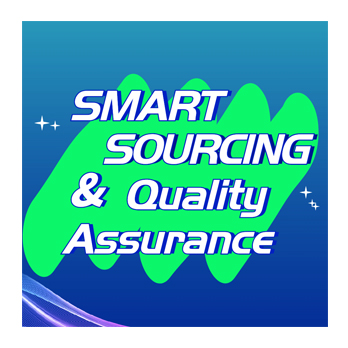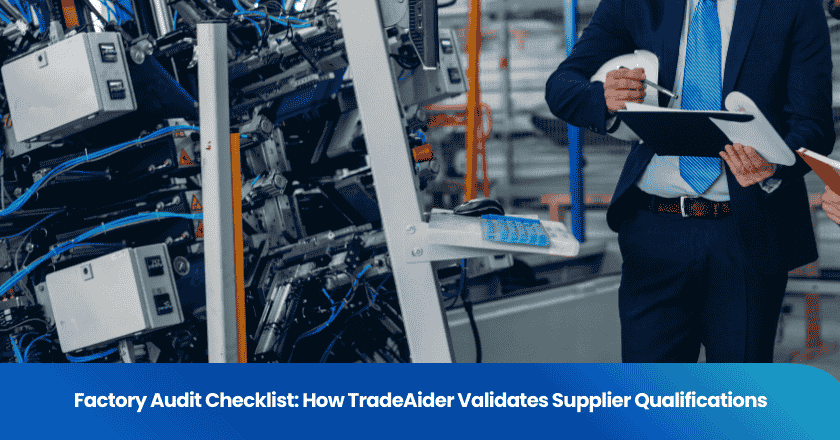
Have you ever wondered if the household goods you buy meet safety and quality standards? Quality inspection services help you ensure that products like furniture, appliances, and kitchenware are safe for daily use. These services check household goods before they reach your home or store. Inspection teams look for defects and test products to protect you and your family. Both consumers and businesses rely on inspection to reduce risks and increase trust.
Key Takeaways
• Quality inspection services protect you and your family by ensuring household goods meet safety and quality standards.
• Inspections happen at different stages: before production, during production, before shipment, and during container loading to catch problems early.
• Inspectors check key products like furniture, appliances, electronics, and kitchenware for defects, safety, and proper function.
• A clear inspection process includes preparation, on-site checks, testing, and detailed reporting to help you make smart decisions.
• Choosing a qualified and transparent inspection provider ensures reliable results and builds trust in your products.
Why Inspections Matter
For Consumers
You want to feel confident about the products you bring into your home. Quality inspection services help you avoid unsafe or faulty household goods. When you choose products that pass inspection, you lower the risk of accidents or disappointment. Inspectors check for defects and make sure each item meets strict quality standards. This process gives you peace of mind and helps you trust what you buy.
For Businesses
If you run a business, you know that customer satisfaction is key. Quality inspection services protect your reputation by catching problems before products reach your customers. You can reduce returns and complaints by using inspection at every stage of production. This approach saves you money and builds trust with your buyers. Many businesses rely on these services to maintain high quality and stay competitive.
Safety and Compliance
Inspection plays a vital role in keeping everyone safe. You need to know that household goods meet safety rules and legal requirements. Quality inspection services check if products follow national and international standards. Inspectors look for hazards and make sure items are safe to use. When you use these services, you help prevent injuries and avoid legal trouble.
Tip: Regular inspection can catch small issues before they become big problems.
Quality inspection services matter because they protect you, your family, and your business. They help ensure that every product meets the highest standards for safety and quality.
Types of Quality Inspection Services
When you want to make sure your household goods meet the highest standards, you need to understand the different types of inspection. Each stage of production offers a unique chance to check and control quality. By using these steps, you can catch problems early and keep your products safe and reliable.
Pre-Production
Pre-production inspection happens before manufacturing begins. You use this step to review raw materials, components, and production plans. Inspectors check if the materials match your requirements and if the factory is ready for production. This early control helps you avoid costly mistakes later.
• You can ask inspectors to:
◦ Verify the quality of raw materials.
◦ Check supplier documents and certifications.
◦ Review production schedules and equipment.
Note: Pre-production inspection gives you a strong foundation for quality control. You can solve issues before they affect the final product.
During Production
During production inspection takes place while goods are being made. You use this step to monitor the manufacturing process and spot defects as soon as they appear. Inspectors visit the factory and check samples from the production line. They look for problems in assembly, workmanship, and materials.
• Key benefits include:
◦ Early detection of defects.
◦ Ongoing quality control.
◦ Immediate feedback to the factory.
You can adjust your process quickly if inspectors find issues. This step keeps your quality on track and reduces waste.
Pre-Shipment
Pre-shipment inspection happens when production is complete but before goods leave the factory. You use this step to make sure finished products meet your standards. Inspectors select random samples and check them for defects, safety, and appearance. They also verify packaging and labeling.
• Typical checks include:
◦ Functionality tests.
◦ Visual inspection for damage or flaws.
◦ Quantity and packaging control.
Tip: Pre-shipment inspection protects you from receiving poor-quality goods. You can stop defective products before they reach your customers.
Container Loading
Container loading inspection takes place as goods are packed for shipping. You use this step to ensure that products are loaded correctly and safely. Inspectors watch the loading process, check container conditions, and confirm that the right items go into each shipment.
• Inspectors will:
◦ Monitor loading for proper handling.
◦ Check container cleanliness and security.
◦ Verify product counts and documentation.
This final control step helps you avoid shipping errors and damage during transit. You can feel confident that your goods will arrive in good condition.
By using all four types of inspection, you create a complete quality control system. You can manage risks at every stage and deliver safe, high-quality household goods.
What Is Inspected
When you use inspection services for household goods, you want to know what gets checked. Each type of product has its own set of standards and tests. You can see how inspection covers every detail to make sure you get safe and reliable items.
Furniture
You expect your furniture to be sturdy and safe. Inspection teams look at joints, finishes, and materials. They check for sharp edges, loose screws, and stability. You can trust that inspectors measure dimensions and test weight limits. They also look for splinters or cracks that could cause harm.
• Inspectors often check:
◦ Structural strength
◦ Surface finish
◦ Assembly quality
Tip: Ask for an inspection report before accepting large furniture deliveries.
Appliances
You rely on appliances every day. Inspection helps you avoid electrical hazards and poor performance. Inspectors test functions like heating, cooling, and safety shut-offs. They check wiring, plugs, and controls for defects. You can feel confident that your appliances meet safety and energy standards.
| Appliance Feature | What Inspectors Check |
|---|---|
| Controls | Function and response |
| Wiring | Safety and insulation |
| Performance | Heating, cooling, cycles |
Electronics
Electronics play a big role in your home. Inspection teams look for faulty circuits, overheating risks, and battery safety. They test buttons, screens, and ports. You get assurance that your electronics pass quality checks for durability and safe operation.
• Common inspection steps:
◦ Visual checks for damage
◦ Function tests for all features
◦ Battery and charging safety
Kitchenware
You use kitchenware to prepare food, so safety matters. Inspection covers sharpness, heat resistance, and food-safe materials. Inspectors look for cracks, chips, and coating quality. You can trust that your kitchenware will not break or release harmful substances during use.
Note: Regular inspection of kitchenware helps you avoid health risks and keeps your cooking safe.
You benefit from inspection at every stage. This process ensures household goods meet strict quality standards and keeps your home safe.
Inspection Process
Understanding theinspection processhelps you see how household goods reach high standards before they arrive at your door. Each step plays a key role in making sure products are safe, reliable, and meet your expectations. Let’s look at how a quality control inspector manages each stage.
Preparation
You start with careful preparation. A quality control inspector reviews product specifications and client requirements. You see them gather checklists and tools needed for the job. They study drawings, standards, and previous reports to understand what to look for during inspection.
• Inspectors prepare by:
◦ Reviewing product standards and safety rules
◦ Creating detailed checklists for each item
◦ Planning the inspection schedule and route
Tip: Good preparation helps you catch problems early and ensures a smooth inspection process.
Preparation sets the foundation for effective control. When you plan well, you make the next steps more efficient and accurate.
On-Site Checks
You move to the factory or warehouse for on-site checks. Here, the quality control inspector examines products directly. They use checklists to guide their work and focus on key areas like appearance, function, and safety.
• Steps you see during on-site checks:
a. Inspectors select random samples from the batch.
b. They check for visible defects, such as scratches or cracks.
c. Inspectors measure dimensions and test moving parts.
d. They classify any defects found as minor, major, or critical.
A quality control inspector uses random sampling to make sure results represent the whole batch. This method saves time and gives you a clear picture of overall quality. Defect classification helps you decide if a product passes or needs correction.
Note: On-site checks help you spot issues before products leave the factory.
Testing and Reporting
After on-site checks, you see the quality control inspector perform specific tests. These tests might include stress tests, safety checks, or performance trials. The inspector records all findings and compares them to the required standards.
• Typical testing and reporting steps:
◦ Conducting functional and safety tests
◦ Recording results in detailed reports
◦ Taking photos of defects or issues
◦ Summarizing findings and recommendations
You receive a clear report that shows what passed, what failed, and what needs improvement. This report supports your quality control decisions and helps you maintain high standards.
| Step | What Happens |
|---|---|
| Testing | Inspectors run safety and function tests |
| Reporting | Results documented and shared |
| Recommendations | Actions suggested for any issues |
A thorough report from a quality control inspector gives you the confidence to accept or reject a shipment.
By following these steps, you ensure every product meets strict quality requirements. The inspection process protects you from defects and supports strong control over your supply chain.
Quality Standards
Criteria Used
You want your household goods to meet high standards. A quality control inspector checks for several key criteria during inspection. These include:
• Durability: Products must last through regular use.
• Safety: Items should not cause harm or injury.
• Functionality: Each product must work as intended.
• Appearance: Goods should look clean and free from obvious defects.
A quality control inspector uses these criteria to decide if a product passes or fails. You can trust that this process supports both quality assurance and your peace of mind.
Common Standards
You may wonder howinspectorsdecide what is acceptable. Quality control inspectors follow recognized standards to guide their work. Two of the most common are:
| Standard | Purpose |
|---|---|
| ANSI/ASQ Z1.4 | Sampling procedures for inspection |
| ISO 2859 | Guidelines for random sampling and acceptance |
These standards help a quality control inspector choose how many items to check and what level of defects is allowed. You benefit from a fair and consistent inspection process.
Note: Using these standards ensures that inspection results are reliable and repeatable.
Inspector Role
A quality control inspector plays a vital role in the inspection process. You see them prepare checklists, use measuring tools, and record results. They look for defects, test functions, and compare findings to standards. Their expertise helps you avoid problems before products reach your home.
• Tasks a quality control inspector performs:
◦ Selects random samples for inspection
◦ Uses tools like calipers, gauges, and test devices
◦ Documents findings and recommends actions
You rely on the skills and judgment of a quality control inspector to maintain high quality. Their work supports strong quality control and helps you receive safe, reliable products.
Choosing a Provider
Selecting the right provider for household goods inspection can make a big difference in your experience. You want to feel confident that your products meet the highest standards. Here are some important factors to consider when you choose an inspection partner.
Credentials
You should always check the credentials of any provider you consider. Look for companies that employ inspectors with proper training and certifications. Qualified inspectors understand the latest safety rules and quality assurance methods. You can ask for proof of their qualifications before you agree to any inspection. This step helps you avoid problems and ensures that your goods receive a thorough check.
• Ask about:
◦ Inspector training programs
◦ Certificates or licenses
◦ Experience with household goods
Tip: Providers with strong credentials often deliver more reliable results.
Transparency
Transparency plays a key role in building trust. You need clear information about how the inspection process works. A good provider explains each step and shares detailed reports with you. You should know what will be inspected, how samples are chosen, and what standards apply. Open communication helps you understand the results and take action if needed.
• Look for:
◦ Sample reports
◦ Clear pricing and timelines
◦ Open answers to your questions
Note: Transparent providers help you avoid surprises and make better decisions.
Reviews
Reading reviews from other customers gives you valuable insight. You can learn about the provider’s reliability, speed, and attention to detail. Positive feedback often means the provider delivers consistent quality. Negative reviews may highlight issues with communication or missed defects. Take time to compare several options before you choose.
| What to Check in Reviews | Why It Matters |
|---|---|
| Timeliness | Ensures quick results |
| Accuracy | Confirms thorough work |
| Customer support | Shows helpful service |
You can use these tips to find a provider who meets your needs and supports your quality assurance goals.
What to Expect
Timelines
You want to know how long a quality inspection will take. The timeline depends on the type and number of household goods you need checked. Most inspections for a single shipment or batch take one to two days. If you have a large order or many product types, the process may take longer. You can often schedule an inspection within a few days of your request. After the inspection, you usually receive a detailed report within 24 to 48 hours.
Tip: Ask your inspection provider for a clear schedule before you begin. This helps you plan your shipping and delivery dates.
Costs
You may wonder how much a quality inspection costs. The price depends on several factors:
• Number of items or batches to inspect
• Type and complexity of products
• Location of the factory or warehouse
• Level of detail required in the inspection
Most providers offer a flat fee per inspection or charge by the day. Some may add travel or special testing fees. You can expect to pay more for urgent requests or inspections in remote areas. Always ask for a full price breakdown before you agree to the service.
| Factor | How It Affects Cost |
|---|---|
| Quantity | More items = higher cost |
| Product complexity | Complex items = higher cost |
| Location | Remote sites = higher cost |
| Urgency | Rush jobs = higher cost |
Outcomes
After the inspection, you receive a detailed report. This report lists any defects, safety issues, or areas that need improvement. You see photos, test results, and clear recommendations. You can use this information to accept, reject, or request changes to your goods. A good inspection helps you avoid costly returns and keeps your customers happy.
Expect clear results and practical advice. Quality inspection gives you the confidence to make smart decisions about your household goods.
You want to make sure your household goods are safe and reliable. Quality inspection services help you avoid risks and support better decisions. When you use these services, you protect your home and business. Consider inspection for your next purchase or shipment. Stay informed and always put safety first. Your attention to detail today can prevent problems tomorrow.
FAQ
What types of household goods can you inspect?
You can request inspection for furniture, appliances, electronics, and kitchenware. Inspectors check many household items to make sure they meet safety and quality standards.
How do you know if an inspection is necessary?
You should consider inspection if you want to avoid defects, ensure safety, or meet legal requirements. Inspections help you catch problems before products reach your home or customers.
What happens if inspectors find defects?
Inspectors report any defects they find. You receive a detailed report with photos and recommendations. You can then decide to accept, reject, or request changes to the goods.
How often should you schedule inspections?
You should schedule inspections at key stages: before production, during production, before shipment, and during container loading. Regular checks help you maintain consistent quality.

Smart Sourcing & Quality Assurance Content Team
Article by Smart Sourcing & Quality Assurance Content Team
The Smart Sourcing & Quality Assurance Content Team is dedicated to delivering high-quality, easy-to-understand information that empowers our audience to navigate the complexities of global sourcing and quality assurance. Our team of writers has extensive experience in creating content across various fields, including procurement, supply chain management, quality assurance, market trends, and industry best practices. We specialize in sectors such as apparel, textiles, and consumer goods, providing targeted insights to help businesses in these industries optimize their sourcing strategies, ensure product quality, and maintain a competitive edge in the market.
Grow your business with TradeAider Service
Click the button below to directly enter the TradeAider Service System. The simple steps from booking and payment to receiving reports are easy to operate.

.png)

